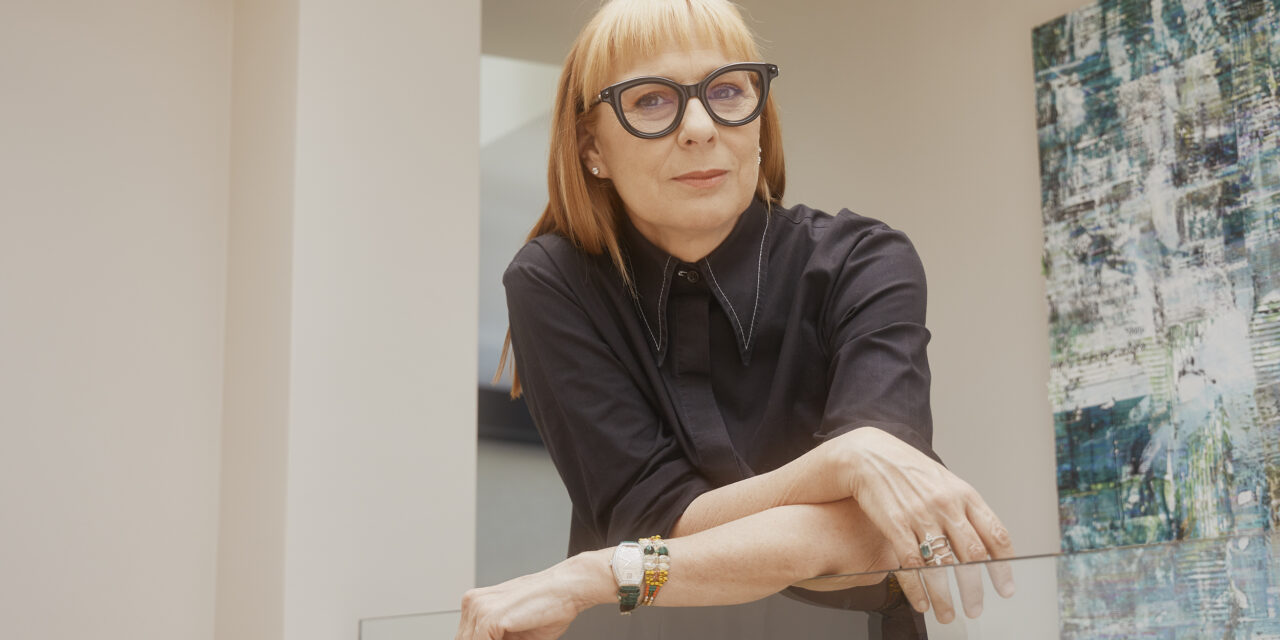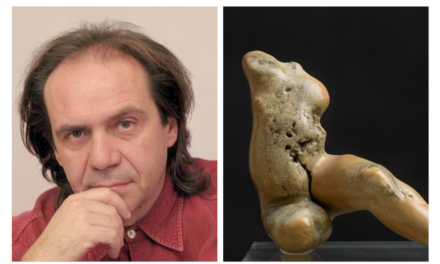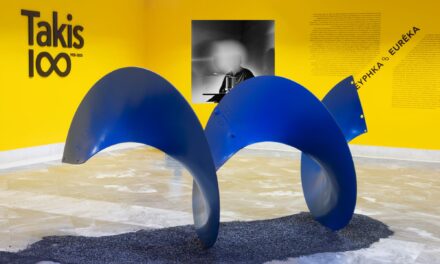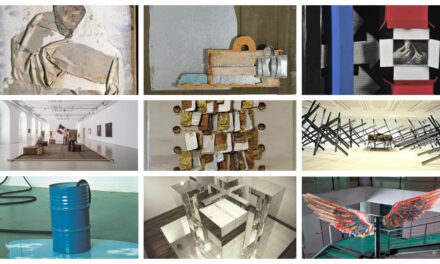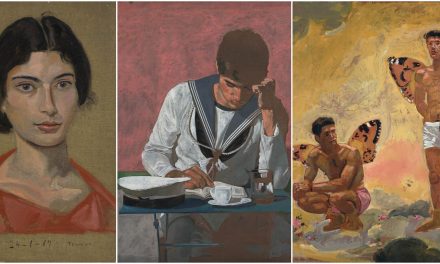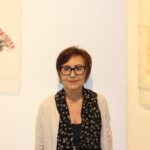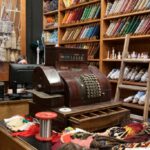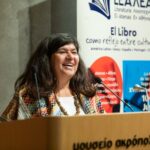The first Biennale of Contemporary Keramics (BCK), is one of the most inspiring artistic events taking place in Greece. Under the auspices of H.E. the President of the Republic Katerina Sakellaropoulou, this ambitious project embarked on its journey on the beautiful island of Santorini, focusing on fostering a creative dialogue between the rich heritage of the island and contemporary ceramics.
This major cultural event resonates with the need to support Greek Ceramic art, create new aesthetic trends and enhance the dialogue between artists and the public. The event will be held every two years on a different Greek island, drawing inspiration from each site, its archaeological past, myths and history.
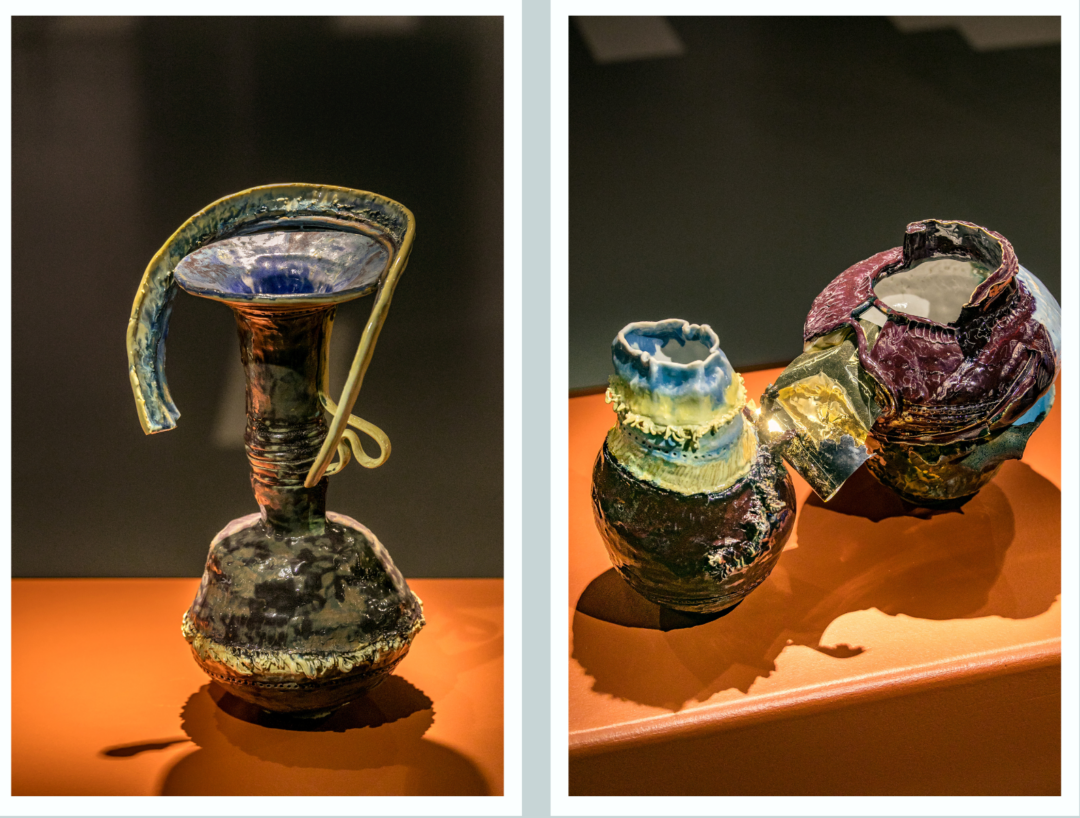
Transcending the boundaries of clay, this primordial material, participating artists seek to unearth hidden narratives, inviting the viewer to reconnect with the heritage, memory and identity of the island. Reinterpreting ancient themes and techniques, contemporary artists create a dialogue that reaches across millennia.
The first BCK is hosted in the Museum of Prehistoric Thera where the artists have the opportunity to work in a dialogue with the precious exhibits of the prehistoric settlement of Akrotiri, a site of immense archaeological importance and a beacon for ancient ceramic art.
Akrotiri was one of the most important urban centers and ports of the Aegean during the Middle and Late Bronze Age (2000-1700 BC). Over five thousand ceramic vessels, well-preserved ruins, frescoes and a number of everyday objects have been discovered at Akrotiri, providing a vivid picture of the ancient world’s reliance and respect for ceramic craftsmanship. The core of the ancient society of Santorini was centred on ceramics. Its heritage narrates stories about daily life, commerce, religious practices, and the role of men and women in ancient society, and it is a testament to human resilience and creativity which continues to inspire to this day.
BCK is like a blue dot that travels, and each time takes place on a different island, drawing inspiration from its heritage, its mythological and historical past, its archaeological landmarks. It endeavors to interact with local communities, contribute to the development of cultural tourism and strengthen the local economy and art.
With the main objective of promoting and recognizing contemporary Greek ceramic art and ceramists on a global level, BCK envisions to become one of the most important cultural events, which will be held every two years in Greece. Its mission is to fill the gap that existed until now in contemporary ceramic art in Greece and to become a great biennale, comparable to those abroad. BCK aspires to become a catalyst for Greek culture and the promotion of Greek and foreign ceramicists, both established and young, connecting domestic artistic production with the international scene.
Loukia Thomopoulou, Founder and Artistic Director of BCK, has a background in business planning and IT and worked for years in the shipping Industry, in Greece and New York, as an in-house Manager in Information Technology and Management of Information Systems and as a consultant/ senior project manager in shipping software companies. Over the past 13 years, she has been devoted exclusively to ceramics. She has attended courses alongside the greatest ceramists in Greece and has earned a certification in Art Curation and Gallery Management from the Sotheby’s Institute.
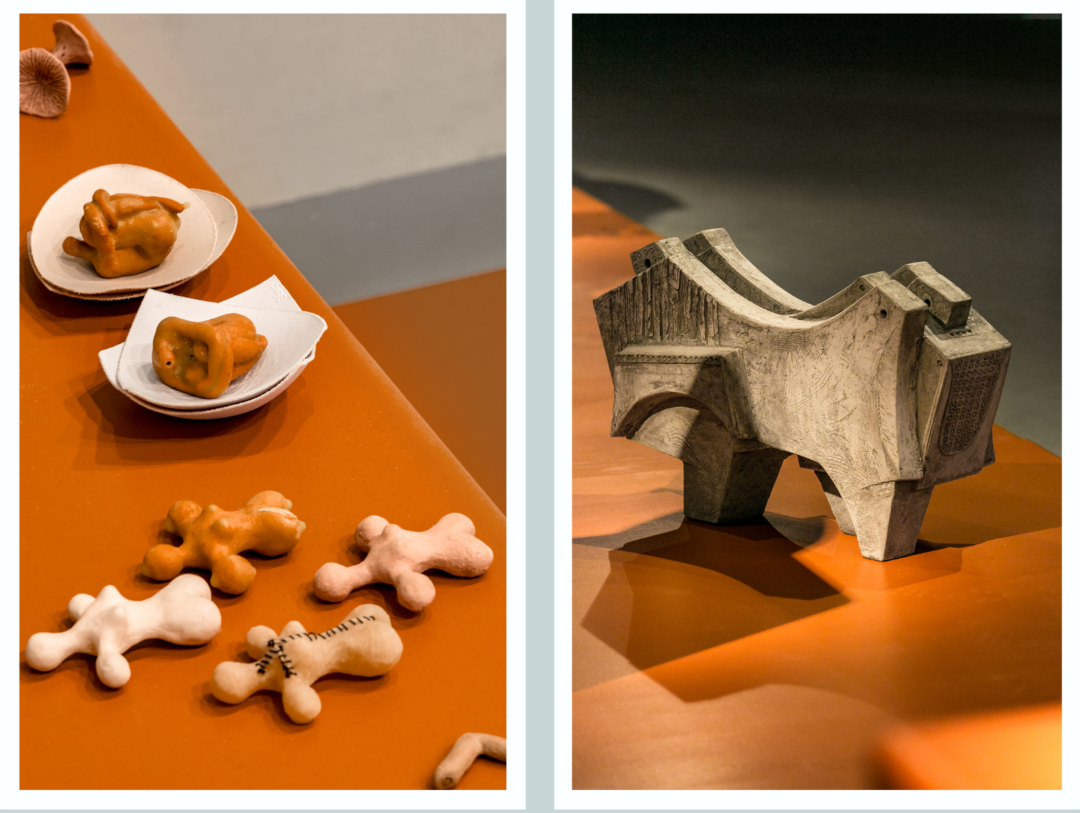
Loukia Thomopoulou, talks to GNA* about embarking on this fabulous journey transcending time, geography and culture.
Your background is in entrepreneurship and technology. What drew you to art and ceramics in particular?
I’ve always been creative, ever since I was a kid. I used to draw, make huge collages, write poems, collect and reuse objects, giving them new meanings, create stage settings and stories. At some point, I even worked for a painter and a sculptor. And, of course, as I was born and raised in Patras I actively participated in the whole creative process of the carnival of Patras. I didn’t want to follow an artistic career at that time, maybe because my family and my square logic directed me to realistic decisions and following a different path; but life always finds a way to bring you back to your destination.
My relationship with ceramics started by chance in 2011 when I decided to do something creative that would keep me away from my computer and give me personal time away from my daily responsibilities. From the first moment I picked up clay I felt like that’s where I belonged. For years I would wander around various workshops and tutors and tried to gain as much knowledge as I could about the material, its construction and technology. I built my little workshop in the ground floor of my house, where I would gradually spend more and more time.
In 2019 I decided to open a space and dedicate myself exclusively to ceramics and in January 2020 I opened Sealed Earth, a workshop that aimed to become a hub for artists and ceramists, to organize seminars and exhibitions and to promote contemporary Greek ceramic art.
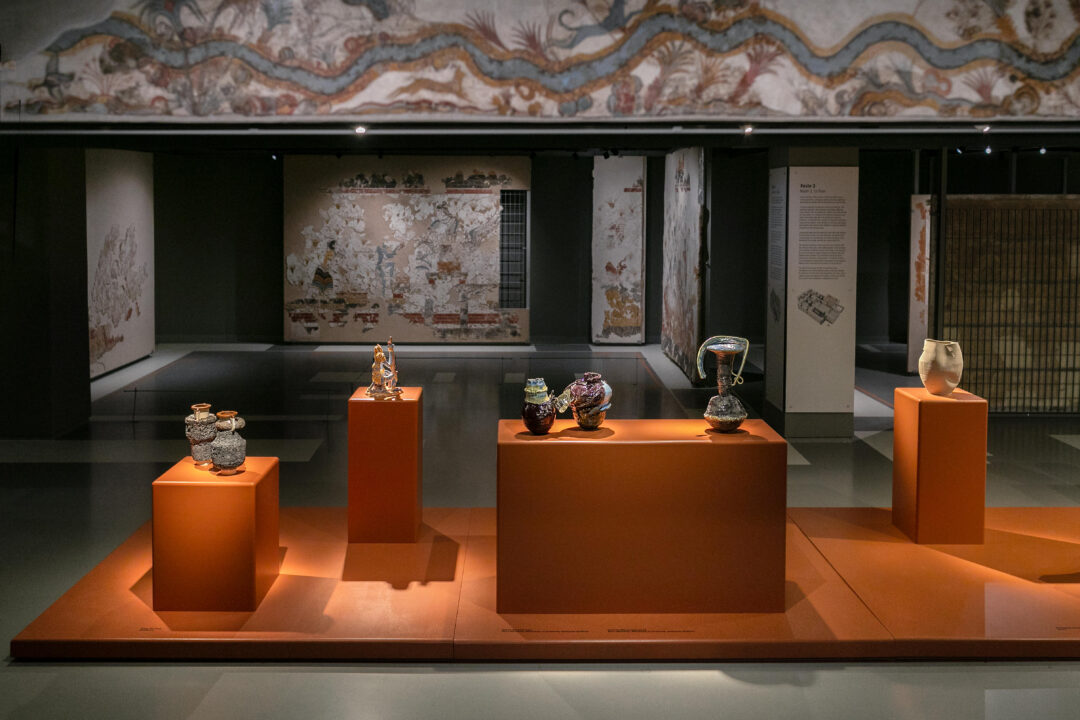
How did the idea for organizing BCK come about? What is the vision behind this project?
In Greece there is no school of ceramics. And despite the fact that our tradition in ceramics goes back millennia there is no major exhibition that could act as a bridge between the Greek and the international ceramic art community. So, the idea came from the need to have a platform for the promotion of Greek ceramics and its artists on the world stage. All over the world, biennials and ceramics competitions are organized that attract great interest and help in the recognition of this art. By organizing the Contemporary Ceramics Biennale in Greece, the aim is to contribute to this global movement, promoting a deeper appreciation and understanding of this art, while at the same time offering a platform for artists through which they can connect, create, inspire and get inspired.
The concept of a travelling exhibition came from the idea that by contributing to the development of cultural tourism, we offer a wider recognition to the participating artists, we enhance local art, and of course we create new experiences and stimuli for the local community and its visitors. Every two years, the event will have a new profile, highlighting and culturally strengthening a different Greek island and our history.
Why was Santorini chosen for the first BCK?
Santorini is an island that I learned to love. It is a misunderstood island, mainly known as a romantic destination and less for its history, architecture, traditional settlements and its role in our cultural heritage. Santorini fascinated me when I visited the prehistoric settlement at Akrotiri, which is a treasure trove of knowledge about the early Aegean culture and was the source of inspiration for this year’s Contemporary Ceramics Biennale.
Thousands of ceramic objects have been found there, transport jars, everyday vessels, seals, ritual objects, household items and furniture that look modern. An organized city of storied houses, art, trade and shipping, dating back to the 17th century BC, suddenly disappeared due to the volcanic eruption. So, inspired by Akrotiri, its architecture, finds and frescoes, we asked the artists to propose their own narrative using clay as a basic material. What’s more, apart from being a beautiful and worldwide famous island, Santorini has all the necessary infrastructure to transport the works and host visitors and artists, and of course it is easily accessible, which was very important, especially for this first BCK.
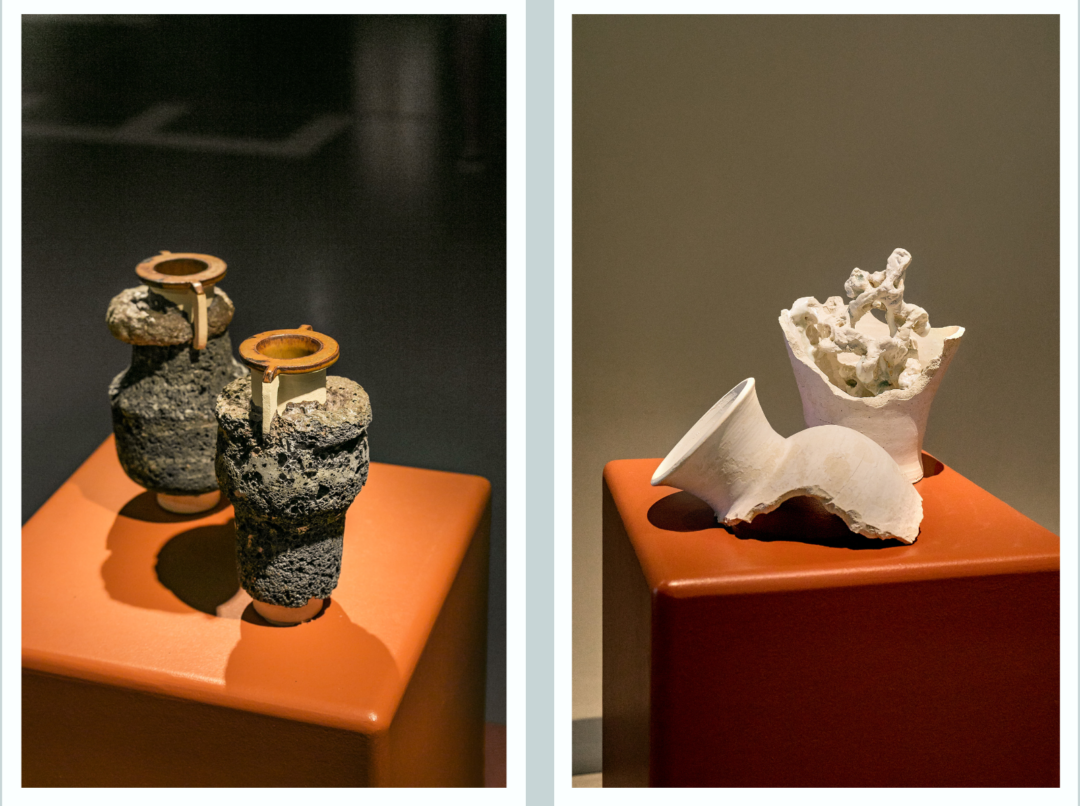
How do you think BCK could contribute to the dialogue between past and present, Greece and abroad, artists and the local community?
This dialogue is vital for the understanding and evolution of art and it is certainly important for us. This interactive relationship can bring about new meanings, enhance artistic creation and enrich the viewer’s experience. For example, for the Japanese artist living in a volcanic country, the contact, inspiration and relationship was to connect the two volcanoes, while the Italian artist, who saw the murals with women radiating dynamism and sexuality, she wanted to speak through her work about female pleasure.
The artists became the narrators of a new story and this created a wonderful intercultural dialogue. BCK strives to contribute to this dialogue through the promotion of contemporary ceramic art inspired by Greek cultural heritage and shows how today’s artists are reinterpreting tradition in search of new ways of expression. It acts as a bridge between the local and international artistic community, bringing international artists and curators in contact with their Greek colleagues. Through collaborations, the exchange of ideas and practices can be promoted, enriching both the Greek and international scene and creating a dynamic hub for local and international dialogues, bringing together people from different backgrounds and encouraging the open exchange of ideas and experiences.
What were the main challenges in organizing the first BCK and how would you evaluate the whole process?
The challenges were many, more than I imagined at the beginning. The most basic was securing sufficient financial resources and finding sponsors. We had to invest a lot of time and effort to find the right supporters who believed in our vision. We also had to manage the technical and logistical details of the exhibition, such as installation of the projects, lighting, security and transport of the exhibits. Despite the difficulties, thanks to the productive cooperation with local stakeholders and the dedication of our team we were able to overcome the challenges and deliver a successful result.
The attendance exceeded our initial expectations, with significant participation from both local and foreign visitors. People from all over Greece have travelled to Santorini to see the exhibition. We are constantly receiving messages from ceramics workshops who organize a visit with their groups in the autumn. The parallel exhibitions in the framework of the Biennale have been a great success, while the workshops and educational programs enhance the educational dimension of the Biennale.
I am sure you are already planning the next BCK. Based on your experience of the 1st Biennale, how do you envision the 2nd one?
We have already started discussions with various institutions about the next Biennale destination and after the first successful event, I hope we will have more involvement from the state. We aim to include more artists and exhibitions and use modern technologies to increase the interaction with the public.
Intro photo: Loukia Thomopoulou ©Dimitra Tzanou
All other photos © Papanikolatos
*Interview by Dora Trogadi

